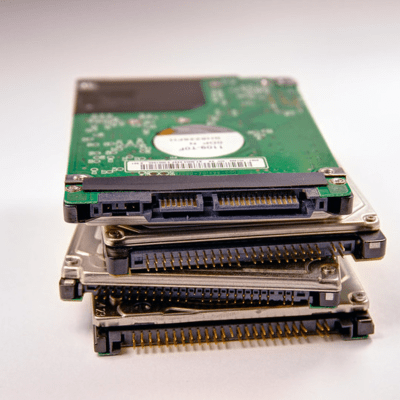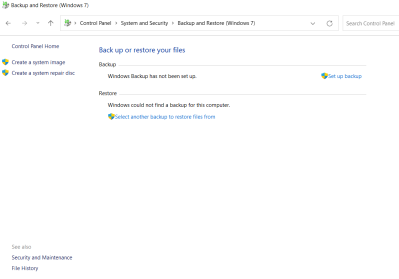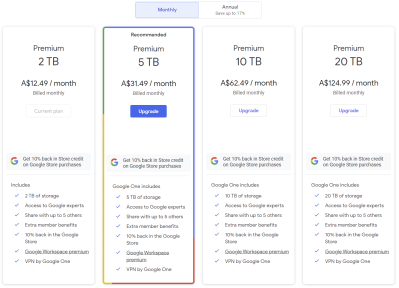
Backing up. It’s such a simple thing on paper – making a copy of important files and putting them in a safe place. In reality, for many of us, it’s just another thing on that list of things we really ought to be doing but never quite get around to.
I was firmly in that boat. Then, when disaster struck, I predictably lost greatly. Here’s my story on what I lost, what I managed to hang on to, and how I’d recommend you approach backups starting today.
Best Practices

Industry standards have moved on, but backup evangelists used to swear by the 3-2-1 rule. It’s simple, straightforward, and covers you in the event of a wide range of disasters. It states you should have three copies of your data, two of which are on different devices locally, and one more which lives off-site. This protects you against data loss from a single failed hard drive or computer, as well as covering you in the event your home or business is suddenly on fire, under water, or occupied by enemy belligerents.
It will not shock you that my own backup regime was not so robust. Oh, I had many excuses for why it wasn’t. Over the years my work and files had spread across two laptops and two PCs. Important files were scattered across multiple hard drives, lurking in folders across the digital Savannah.
Backing up for me would be no simple matter. I’d have to figure out where everything important was, then find a way to organize it or back up the entire sweaty mess as-is. Just trying to find all that stuff and drag it onto a portable drive would be a pain. Let alone having to do that manually every week!
Plus I’d then also have to make a copy and truck that somewhere off-site on the regular to truly protect what I had. Even worse, I had on the order of 8 terabytes of data built up from years of video production and other creative works. Backing up would be difficult and expensive. Instead, every time I thought about backups, I thought “too hard!” and moved on with my life. I trusted my hard disks, after all, and figured if I’d been fine for 20 years, I’d be fine forever.
Like Tears In Rain
That all came crashing down when some enterprising criminals broke into my house and stole everything of value that I had. Every laptop and PC walked out the door, along with multiple guitars, a prized synthesizer, and just about everything else electronic worth over $50. One small victory was that my television was too big for the thieves to carry, so mercifully, they let me hang on to it.
When my computers left the building, so did the vast majority of my data. YouTube videos, T-shirt designs, robot projects, websites, logos, PCBs… all gone. It was a crushing blow. The worst losses were the various files that made up the tools of my trade. I write over a thousand articles a year, and to do that means having a streamlined workflow. Things like image templates, logos, audio and video stings and other ephemera I use for producing media were all gone, and that was really painful. Similarly, a few filmclips and other projects laid unedited, and those shoots are now gone forever.
The loss put a lot in perspective for me. I realized I’d been holding terabytes of data, unwilling to lose any. It was surprising, but the vast majority of data I was keeping was almost meaningless to my day to day life. Funnily enough, the next day, I borrowed an old laptop and was able to get to work without too much trouble. I simply have had to start recreating my tools as I go.
In the following days, I was glad to realize that not all was lost. I found bits and pieces of data wherever I could. My phones have backed up my photos to the cloud since 2015, so all my photographic memories were preserved. My source files for YouTube videos were all gone, but my finished output still survives on YouTube itself. Thankfully, my darling robot cum autonomous mower had been in pieces, and ignored by the thieves. That meant I could make a new backup of all the code on its SD card, containing the sum total of hundreds of hours of my engineering effort. Having to recreate that code would take me months; finding a copy was truly glorious. Finally, I’d also seen fit to spend some money on cloud backups for my studio computer. That meant my last decade of musical output was similarly protected.
Moving forward, I took this traumatic event as an opportunity for a new start. With virtually no files left, backing up would be easier. I no longer have files scattered across four machines because I no longer have four machines. Nor do I have 8 TB of data to deal with.

I’m still not sure I’ll go for a full 3-2-1 backup regime, though. Instead, I’ll invest in a cloud backup of my main data. Previously, I’d considered this, but avoided it for reasons of cost. 8 TB would have cost me on the order of $60 a month to secure back when I’d looked into it, and I’d found this too expensive to bear. Now, I can choose a much cheaper backup plan, at least until I start building up a huge cache of video again. Having a second local copy of my data doesn’t seem particularly useful, other than if the cloud backup and my main storage fails on the same day. It could happen, but I feel like I’m still willing to gamble it won’t.
Ultimately, I’m doing okay through a combination of luck and forward planning. I knew my musical works were impossible to recreate, so I’d spent a few bucks backing them up in the cloud. That was smart. As for the design files stored on my robot, I simply got lucky that they weren’t stolen as well. Had I suffered a major house fire instead of a theft, I might have found myself significantly worse off.
Actions To Take

If you’re reading this story and fretting yourself, that’s normal. The best time to start backing up your files was a long time ago, but the second best time is today. Depending on the route you take, it may be expensive to backup your files, or require a lot of mucking around. Cloud services charge a fee for storage, for example, and buying portable drives costs money. Trucking your own backups on- and off-site on the regular also takes a lot of effort.
In reality, the best backup scheme is the one you can actually implement and stick to. There’s no point in setting up a cloud service to backup your data if you have to cancel your subscription in three months because it’s too pricy. Similarly, if you forget to keep running your backups, you put yourself at risk of loss once again. The trick is to manage these risks. If you can’t spend the time to manually back up your stuff, look at using a backup manager or building an automated tool to handle it for you. If you can’t afford to pay for cloud backups, consider stashing some drives at a friend’s house and setting up a automated service to sync your files.
Overall, I learned that while backups are expensive, losing valuable files is expensive too. Valuable being the key word. For me, the things that would be most expensive for me to recreate, in time or money, were saved largely by luck. These were things like code or design files that I still regularly need and use, and would have to recreate from scratch. Now I realise I need to spend the most effort backing up that data.
As for things like old game saves, old university assignments, and source files for old videos I finished years ago? 99% of that stuff, I would never touch in a decade anyway. It’s a shame to lose it, for sure. But because I couldn’t afford to protect everything I had, I ended up protecting none of what I had. I could have lost so much more.
The upshot is that if you want to protect your data, you need to take action to do so. If you can’t protect it all, focus on protecting what is most valuable to you. Then, find a way to protect it that is feasible for you and that you can readily keep up with. Then, when the worst happens, you’ll bounce back better than I did. Stay safe out there!
What Losing Everything Taught Me About Backing Up
Source: Manila Flash Report
0 Comments